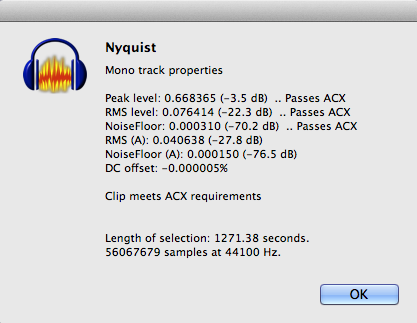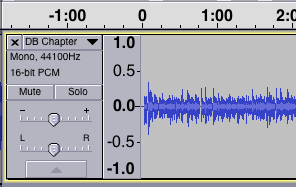It’s not my voice. It’s yours.
You’re not supposed to be together. You’re a performance creative. You can use that. Put it on you’re business card or CV.
Koz
It’s not my voice. It’s yours.
You’re not supposed to be together. You’re a performance creative. You can use that. Put it on you’re business card or CV.
Koz
I got a correction to work on chapter 1. I need to pause and collect how I did it.
Koz
I have an odd complaint. Starting from the download (perfectly lovely, by the way), tell me who you are.
Your posting scrolled from the active help forum window, so I have to go looking for you. There’s no identifying information in the download page past what I can glean by actually playing the work and identifying the characters. Is “DB” the name of the show?
The elves juggle many multiple postings, complaints and suggestions and I for one can’t remember individual posts. I juggle two browsers, so there’s no return link to the forum.
Attached for Chapter 1.

You got expressive and theatrical at 9:50 or so and the blue waves poked up and threw off the overall average volume. “Rob!! You called him Rob!!” That’s OK. You didn’t break anything.
Audio Compressor
– Select the whole clip or show by clicking just above MUTE.
– Effect > Normalize: [X]Remove DC, [X]Normalize to -3.5 > OK
– Effect > Compressor: Thresh -20, Floor -40, Ratio 2:1, Attack 0.2, Release 1.0, > OK
– Effect > Normalize: [X]Remove DC, [X]Normalize to -3.5 > OK
The compressor removed the expressive peaks, pushed up the overall volume enough to pass RMS (Loudness). The settings are gentle and graceful, so I expect any damage to be minimal if you can even find any.
Attached: Before and After blue waves. After is slightly louder and has more “beef” to it. That’s not a bad explanation for RMS. Electrical RMS is a measurement of energy, horsepower or density of a wave. It tracks very well to overall show loudness which is why it’s used.
Koz


I think I stepped in it. Your hero is Clarissa, not Claire. That’s not your show.
I got the show to pass ACX nicely whoever the performer is.
…
…
Meet Laura.
https://forum.audacityteam.org/t/acx-mastering/44198/1
Koz
I figured you weren’t addressing me. LOL
It was going so well, too.
Koz
PROGRESS!!! I haven’t received an email yet, but the project view at ACX now reads “headed to retail…”

That’s a good sign. This is where they pick off the pauses, room tones, extra file management, etc. and prep it for distribution. We wish they were doing this with the WAV or other uncompressed file type, but no. They’re using MP3 and this is why they urge you strongly to make 192 quality or greater MP3 for submission. If you have a mono show (highly recommended) that quality is significant overkill and they can do their distribution management with no problems.
Congrats.
So shortly you’ll be retiring to a little white stucco cottage on Majorca, right?

Koz
I’ll keep you posted! HA!
I just want to thank Koz and Diane for going through this process. I’m thinking my sample is in slightly better shape (I hope, I hope). Which means I will get my own book done in a way that is acceptable to our friends at ACX. It is crazy-making to learn all this from the ground up. But aside from Koz and Steve being the generous geniuses that you guys are, seeing other folks get their work up and running is insanely encouraging to me. Thanks
It is crazy-making to learn all this from the ground up.
And then relearn it with the new tools.
I perceive it was Diane who was far enough along using the “classic” tools that we boosted her existing process without changing anything very much.
We totally don’t do it that way any more. The older Compressor, Limiter, Noise Reduction, Equalizer, yadda, yadda, yadda is no longer recommended. Steve wrote RMS Normalize which for the first time gave us the ability to define the loudness of a reading in one pass. If you do a reasonable job of reading, the correction suite looks like: RMS Normalize > Limiter > Check Noise > Publish > become famous and retire to a cottage on Majorca.
This will get a bit fuzzier if you fail noise. Then it still gets crazy when we determine which noise you have, and it could get even wackier if either you or ACX don’t like the theatrical quality of your voice. As I post at every opportunity, all we’re doing is solving Technical Conformance. After you submit, ACX will listen to it and perform Theatrical Conformance.
If you can’t read, that’s not our problem, and no, there’s no effect to make you sound like an announcer.
I published an AudioBook Mastering paper, but it’s already out of date. New one on the way.
Koz
I’m glad my experience was helpful to someone other than me! I haven’t bought my cottage in Majorca yet, but I did take a Caribbean cruise. So thanks, Koz.
Are you using the correction suite with RMS Normalize?
Koz
I’m having some trouble getting it to work. Posted earlier.
@Diane. You’re not using RMS Normalize are you?
You’re in that magic zone where it might create more problems than it cures by shifting to the new protocols.
Koz